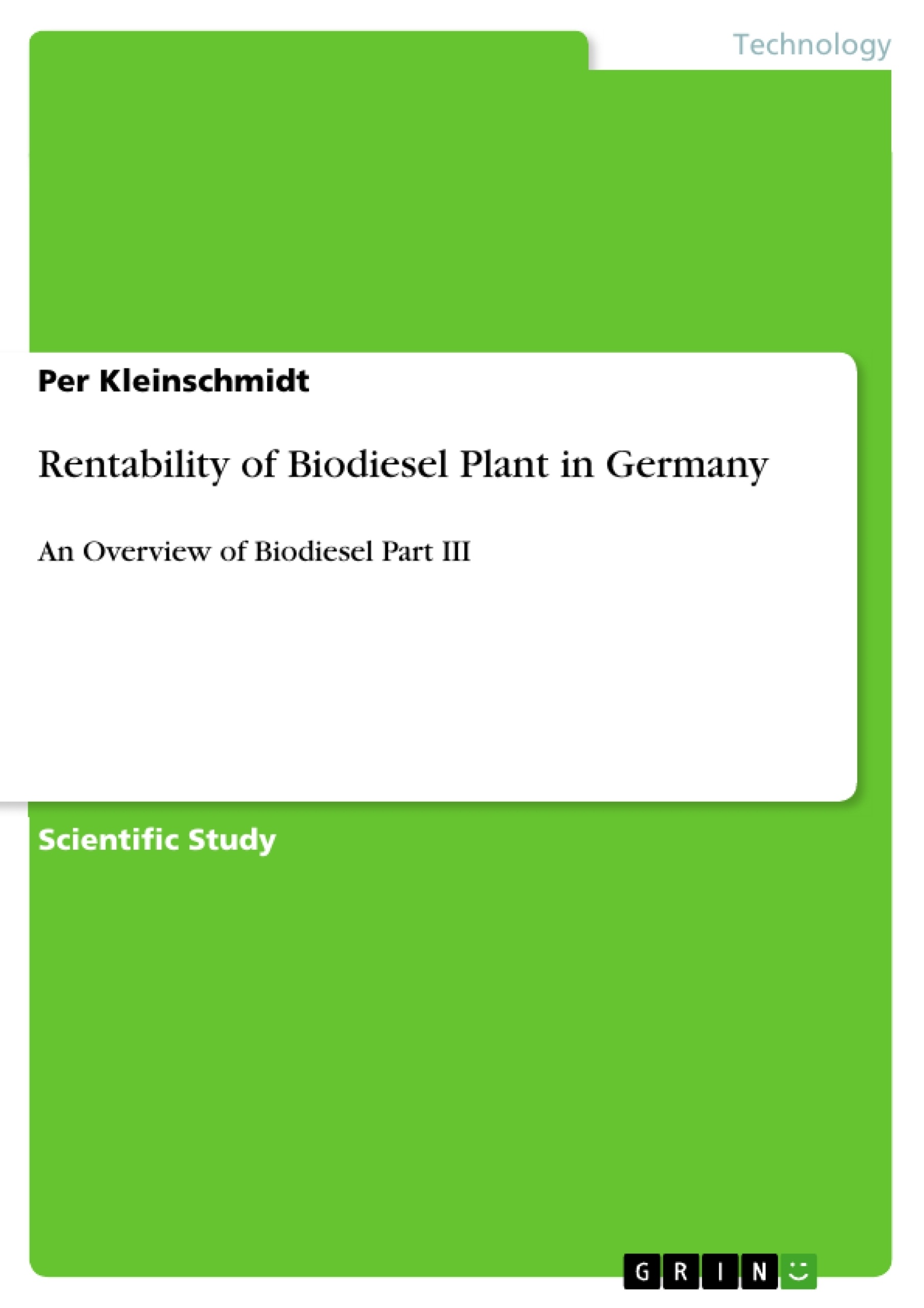Market Overview
Facing the obvious need to switch from fossil fuels, which are limited in their availability, to environmentally friendly and substitutive energy sources, both the national government and the European Union are promoting alternative fuels like biodiesel, bioethanol or biogas. The creation of a common European standard, tax incentives, the opening of new distribution channels and the provision of cultivation related premiums are paving the way for the establishment of a strongly growing market for biofuels.
Biodiesel is the most frequently used alternative fuel in Germany. Its market volume has steadily increased with double-digit growth rates over the last couple of years. Sales of biodiesel increased from 2004 to 2007 approx by a massive 280% and reached a new peak of 3.32 million tons.
It is currently the best-known alternative fuel for the fossil diesel in Germany. In 2007, around 72 percent of the total biofuels in Germany was biodiesel.
Inhaltsverzeichnis (Table of Contents)
- Introduction
- Market Overview
- The Case "Biodiesel Plant XYZ"
- Investment
- Plant specifications and capacities
- Products and Price development
- By-products
- Price development in generals
- Key Financials
- Profit and Loss Statement
- Return Sheet
- Cash Flow Statement
- Stress tests
- Summary for bio diesel plant in Germany
- List of literature
Zielsetzung und Themenschwerpunkte (Objectives and Key Themes)
This document is the third part of a trilogy that explores the topic of biodiesel in Germany. The overall goal of the trilogy is to provide a comprehensive understanding of biodiesel, from its historical context and relationship to climate change, to its production and profitability.
- The profitability of biodiesel production in Germany
- Investment costs and plant specifications for biodiesel production
- Market trends and pricing for biodiesel and related products
- Financial analysis of a hypothetical biodiesel plant, including stress testing
- The role of biodiesel in promoting climate protection
Zusammenfassung der Kapitel (Chapter Summaries)
The first chapter provides an introduction to the overall trilogy, outlining its main objectives and the interconnectedness of its three parts. It emphasizes the importance of quality assurance for the literature sources, particularly those accessed through the internet.
The second chapter provides an overview of the biodiesel market in Germany, highlighting relevant trends and developments. The chapter delves into the case of "Biodiesel Plant XYZ," examining its investment costs, plant specifications, product prices, by-products, and overall profitability.
The third chapter delves into the financials of "Biodiesel Plant XYZ." It analyzes the company's profit and loss statement, return sheet, and cash flow statement. The chapter also includes stress tests to assess the plant's performance under different economic scenarios.
Schlüsselwörter (Keywords)
The main keywords and focus topics of this text include biodiesel, profitability, climate protection, investment, plant specifications, financial analysis, stress testing, market overview, price development, and by-products. The text also discusses the importance of quality assurance for literature sources, especially those accessed through the internet.
- Citation du texte
- Dipl.-Ing. Per Kleinschmidt (Auteur), 2009, Rentability of Biodiesel Plant in Germany, Munich, GRIN Verlag, https://www.grin.com/document/126922



